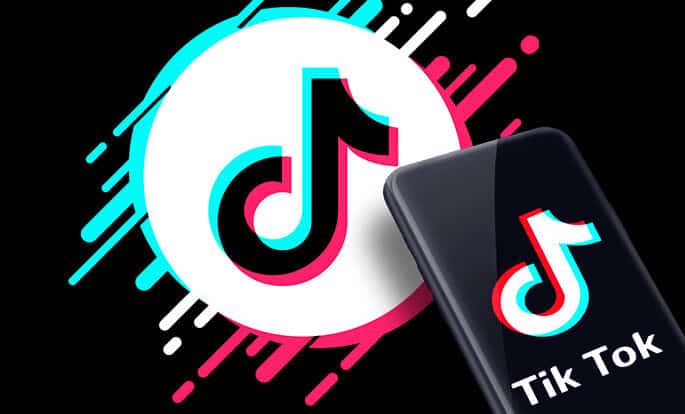
In today’s fast-paced and digitally-driven world, a logo is not merely a static symbol but a dynamic ambassador for a brand. As consumers engage with businesses across a myriad of platforms, from websites and social media to traditional print, the need for a versatile logo has never been more paramount. This article delves into the intricacies of creating a logo that transcends the boundaries of different media, offering insights into design principles, color schemes, scalability, and more. Understanding the evolving nature of consumer interaction is key to developing a logo that remains impactful and consistent across the diverse landscape of modern communication channels.
Understanding the Need for Versatility in Logos
In the age of information overload and constant connectivity, a brand’s identity is continuously exposed to a diverse audience through an array of digital and physical touchpoints. From the sleek screens of smartphones to the tangible pages of print materials, a logo must seamlessly integrate into various environments while maintaining its visual coherence. The digital era has not only expanded the platforms through which brands communicate but has also heightened the expectations of consumers. A versatile logo is not merely a design choice; it is a strategic necessity, ensuring that a brand remains recognizable, memorable, and impactful across the ever-expanding spectrum of media. As businesses strive to establish a robust online presence, the adaptability of a logo becomes a linchpin in the success of conveying brand values, creating lasting impressions, and fostering brand loyalty. This section will delve into the multifaceted reasons why versatility in logos is not just a design preference but a prerequisite for navigating the complexities of modern brand representation.
Principles of Designing a Versatile Logo
Creating a versatile logo involves adhering to fundamental design principles that go beyond aesthetics and delve into the psychology of brand perception. Simplicity, a cornerstone of effective design, ensures that a logo remains easily recognizable across various media and sizes. A simple logo not only aids in quick comprehension but also enhances scalability, enabling it to maintain its impact on diverse platforms.
Memorability is another crucial aspect. A logo should leave a lasting impression on the audience’s mind, making it instantly recallable across different contexts. By focusing on memorable elements, such as unique shapes or distinctive symbols, designers can contribute to the enduring power of a logo. The online logo design software Turbologo allows you to add slogans and mottos to the logo.
Relevance to the brand and its values is equally vital. A versatile logo should encapsulate the essence of the business it represents. Whether displayed on a website, a social media profile, or a physical product, the logo must consistently communicate the brand’s identity and resonate with its target audience.
As we explore these principles, it becomes evident that versatility is not just about visual adaptability but also about maintaining a cohesive brand narrative across diverse mediums. By embracing simplicity, memorability, and relevance, designers lay the foundation for a logo that transcends the limitations of individual platforms, ensuring its effectiveness in the complex web of modern communication channels.
Choosing Adaptable Color Schemes
Color is a powerful tool in logo design, influencing emotions, perceptions, and brand recognition. When aiming for versatility, selecting an adaptable color scheme is paramount. Opting for a palette that not only aligns with the brand’s identity but also translates well across different mediums is a strategic decision.
Consider the context in which the logo will appear – from the vibrant glow of digital screens to the subtleties of print. A color scheme that maintains contrast and readability in various lighting conditions ensures that the logo remains visually striking and legible. Additionally, accounting for the potential backgrounds the logo might be placed on is essential for guaranteeing its adaptability.
Moreover, the psychology of color should not be underestimated. Different colors evoke distinct emotions and associations, and understanding these nuances is crucial. A versatile color scheme strikes a balance between uniqueness and universality, ensuring that the logo resonates with diverse audiences without losing its individuality.
In an era where logos are viewed across an assortment of devices and platforms, the adaptability of color becomes a key factor in maintaining brand consistency. By thoughtfully selecting and testing color schemes, designers can enhance the flexibility of a logo, contributing to its effectiveness across a wide array of media channels.
Creating Scalable and Responsive Logo Designs
Scalability is a cornerstone of a versatile logo, emphasizing its ability to maintain visual integrity across different sizes without compromising on clarity or impact. A logo that looks just as compelling on a towering billboard as it does on a tiny mobile app icon is a testament to effective design.
To achieve scalability, designers must pay meticulous attention to the intricate details of the logo. Elements that may be prominent in larger formats might become indistinguishable in smaller renditions. Striking the right balance between simplicity and detail is key, ensuring that the logo remains recognizable whether it’s filling a computer screen or serving as a favicon on a browser tab.
Responsiveness takes the concept of scalability further, considering not only different sizes but also various resolutions and devices. With the proliferation of smartphones, tablets, and high-definition displays, a responsive logo adjusts seamlessly to different screen resolutions, maintaining its visual appeal and impact regardless of the viewing medium.
By incorporating scalability and responsiveness into the design process, creators can ensure that a logo adapts effortlessly to the diverse digital landscape. This adaptability guarantees that the brand message is communicated consistently, regardless of whether the logo is viewed on a large desktop monitor, a tablet, or the palm of someone’s hand on a smartphone.
Selecting Fonts and Typography for Various Media
Typography plays a crucial role in logo design, contributing to its overall tone, personality, and readability. When aiming for versatility, choosing fonts that are legible and adaptable across different media is essential.
Firstly, consider the characteristics of the font itself. Fonts with clean lines and simple shapes tend to scale well, ensuring readability at both large and small sizes. Additionally, fonts with multiple weights and styles offer flexibility, allowing for variations that suit different contexts without sacrificing consistency.
Furthermore, take into account the medium in which the logo will appear. On digital platforms, such as websites and social media, consider the screen resolutions and pixel densities of various devices. Fonts that are optimized for digital display ensure crisp rendering across different screens, from high-resolution monitors to mobile devices with varying pixel densities.
For print materials, such as business cards, brochures, or billboards, choose fonts that reproduce well in different printing techniques and sizes. Pay attention to factors like kerning, leading, and tracking to ensure optimal readability, especially in smaller print sizes or when viewed from a distance.
Moreover, consider the cultural and aesthetic associations of the font. A font that may convey a modern, tech-savvy image in one context might feel out of place or inappropriate in another. By understanding the nuances of typography and its impact on perception, designers can select fonts that resonate with the brand’s identity and message across diverse media channels.
In summary, selecting fonts and typography for a versatile logo involves a careful balance of readability, adaptability, and aesthetic considerations. By choosing fonts that are well-suited to different media, designers can ensure that the logo maintains its visual impact and communicates the brand message effectively across various platforms.
Testing Logo Performance Across Different Platforms
Once the logo design is finalized, rigorous testing across diverse platforms becomes a critical phase in ensuring its adaptability and effectiveness. This comprehensive testing process involves assessing how the logo performs in real-world scenarios, considering factors such as digital screens, print materials, and social media profiles.
On digital platforms, evaluate how the logo appears on various devices with different screen sizes and resolutions. Test its visibility and clarity on desktop monitors, laptops, tablets, and smartphones. This step ensures that the logo remains visually appealing and retains its impact, regardless of the device through which it is accessed.
Print materials introduce another layer of complexity. Assess the logo’s performance in both color and black-and-white printing, considering different paper types and finishes. Evaluate its legibility in various print sizes, ensuring that intricate details do not get lost, and that the overall design remains crisp and recognizable.
Social media platforms pose unique challenges due to their specific design requirements and varying display dimensions. Test the logo as a profile picture, cover photo, or in posts to guarantee its visibility and aesthetic appeal in these diverse contexts. Additionally, consider how it integrates with other visual elements on the platform without losing its identity.
Moreover, don’t overlook the logo’s performance on collateral such as business cards, merchandise, and promotional materials. These tangible items may present different size constraints and printing methods, demanding further adjustments to ensure the logo’s versatility and consistency across all brand touchpoints.
By conducting thorough testing across these different platforms, designers can identify potential issues and refine the logo to enhance its adaptability. This iterative process ensures that the logo not only meets the initial design objectives but also stands the test of real-world applications, reinforcing the brand’s visual identity across the broad spectrum of media channels.
Balancing Simplicity and Uniqueness
One of the enduring challenges in logo design is striking the delicate equilibrium between simplicity and uniqueness. A versatile logo must capture the essence of a brand without overwhelming the viewer with complexity. Simplicity is not merely an aesthetic preference; it is a strategic choice that enhances recognition and memorability across diverse media.
A simple logo is more likely to translate seamlessly across various sizes and platforms, ensuring that it remains clear and impactful whether displayed prominently on a website or in a more compact form on a social media icon. The timeless adage “less is more” holds particular relevance in logo design, where intricate details may be lost or distorted in different contexts.
However, simplicity should not come at the expense of uniqueness. A logo must still possess distinctive elements that set it apart from competitors and make it instantly recognizable as belonging to a specific brand. Achieving this balance involves careful consideration of visual elements, color choices, and overall design composition.
Uniqueness, in the context of a logo, goes beyond mere visual appeal. It involves creating a design that conveys the brand’s personality and values in a way that resonates with the target audience. Whether through a unique icon, a memorable color scheme, or a distinctive font choice, the logo should encapsulate what makes the brand stand out in a crowded market.
In essence, finding the equilibrium between simplicity and uniqueness is an art form. It requires a deep understanding of the brand’s identity, the target audience, and the various mediums through which the logo will be presented. A versatile logo achieves the delicate balance, presenting a visually clean and memorable design while retaining the distinctive elements that make it uniquely representative of the brand.
Utilizing Online Tools for Flexible Logo Design
In the contemporary era, where digital technologies have democratized the design process, online tools offer a valuable resource for creating flexible and adaptable logos. These tools provide a range of functionalities that can streamline the design process, ensuring that even those without extensive graphic design expertise can produce professional and versatile logos.
Online logo makers often come equipped with user-friendly interfaces, allowing individuals to experiment with various design elements, color schemes, and fonts. Templates tailored for different platforms and industries can serve as starting points, helping users grasp the fundamentals of versatile logo design while maintaining a unique and brand-specific identity.
Furthermore, these tools frequently incorporate features that facilitate collaboration among team members, irrespective of their geographical locations. This collaborative aspect is particularly beneficial for businesses with diverse teams working on a logo design project, ensuring a cohesive and well-coordinated effort.
Many online design platforms also provide instant previews and mock-ups, allowing users to visualize how the logo will appear across different media channels. This feature enables real-time adjustments, ensuring that the logo remains effective and visually appealing in various contexts before finalization.
While leveraging online tools, it is crucial to maintain a balance between convenience and customization. While these tools offer a convenient starting point, the final design should still reflect the unique identity and values of the brand. Online tools should be viewed as aids, empowering individuals and businesses to create logos that are not only visually appealing but also flexible enough to adapt to the demands of diverse media landscapes.
In summary, the use of online tools for flexible logo design represents a modern approach to the creative process. By embracing these platforms, designers can benefit from efficiency, collaboration, and visualization features, ultimately contributing to the development of logos that seamlessly navigate the challenges of various media channels.
Case Studies: Logos That Excel in Multiple Media
Examining successful logos that have demonstrated exceptional versatility across various media channels provides valuable insights into effective design strategies. One such exemplary case is the Nike Swoosh logo. Known for its simplicity, the Swoosh is easily recognizable on digital screens, sportswear, and even as a prominent feature on footwear. The logo’s minimalist design allows it to scale seamlessly, maintaining its impact whether displayed prominently or in a more subdued form.
Another notable example is the Apple logo. This iconic symbol has transcended its original purpose as a computer company logo to become a ubiquitous presence on a vast array of digital devices. The clean, monochromatic design not only enhances readability on screens of all sizes but also facilitates easy integration into various contexts, from product packaging to sleek advertisements.
Furthermore, the Coca-Cola logo serves as a testament to the enduring power of simplicity and consistency. The distinctive red and white lettering, coupled with the iconic wave, has remained largely unchanged for decades. This logo has proven its adaptability across a plethora of mediums, from billboards and television ads to the small labels on beverage cans.
Each of these case studies underscores the importance of timeless design elements, simplicity, and brand consistency in creating logos that transcend the limitations of individual media channels. By studying these successful examples, designers can draw inspiration and distill principles that contribute to the creation of logos capable of excelling across the dynamic landscape of modern communication.
Revising and Updating Logos for Long-Term Versatility
The digital age has accelerated the pace of change, not only in technology but also in design trends and consumer preferences. Recognizing this dynamic landscape, brands must adopt a proactive approach to revising and updating their logos for long-term versatility. While it’s essential to establish a consistent visual identity, periodic revisions ensure that logos remain relevant, resonate with evolving audiences, and align with contemporary design aesthetics.
Longevity in logo design does not equate to stagnation; rather, it involves a careful balance between maintaining brand recognition and adapting to shifting cultural and design landscapes. Regularly assessing a logo’s performance across various media channels allows businesses to identify areas for improvement, ensuring that the design remains functional and effective in the face of changing technologies and consumer behaviors.
Additionally, updates can address practical considerations, such as enhancing scalability for emerging platforms or optimizing color schemes for evolving display technologies. A logo that was designed with versatility in mind may still benefit from periodic adjustments to stay ahead of design trends, ensuring it stands out amidst a sea of visual stimuli.
Engaging in market research, seeking consumer feedback, and staying attuned to design trends are integral aspects of the revision process. By combining these insights with a commitment to preserving core brand elements, businesses can navigate the delicate balance between maintaining a recognizable identity and adapting to the ever-shifting demands of the digital landscape.
In conclusion, revising and updating logos is not a sign of inconsistency but a strategic response to the dynamic nature of the business environment. Embracing change while preserving the essence of the brand allows logos to remain versatile and effective long into the future. Through thoughtful and intentional revisions, brands can ensure that their visual identities evolve in harmony with the changing tides of design and technology, securing their relevance in the hearts and minds of consumers.
In the intricate dance between timeless identity and adaptive design, creating a logo that excels across diverse media emerges as both an art and a science. The journey from conceptualization to realization demands a keen understanding of design principles, user experience, and the ever-evolving nature of digital communication.
As technology continues to reshape how we engage with brands, the importance of a versatile logo becomes increasingly evident. The insights shared in this exploration, from the fundamental principles of simplicity and memorability to the practical considerations of color schemes and responsive design, serve as a compass for those navigating the complex landscape of logo creation.
The case studies illuminate the triumphs of logos that have seamlessly integrated into various media, becoming symbols not just of brands but of cultural resonance. These success stories underscore the significance of meticulous design, adaptability, and a commitment to a brand’s core identity.
Furthermore, the discussion around revising and updating logos acknowledges the inevitability of change. Long-term versatility requires a proactive stance, where brands evolve in harmony with societal shifts and technological advancements. It is a reminder that flexibility, rather than rigidity, is the key to sustained relevance.
In essence, creating a versatile logo is an ongoing journey, a commitment to balance, adapt, and resonate across an ever-expanding spectrum of media. As we navigate the future of branding, the ability to craft logos that transcend individual platforms remains a powerful tool for businesses seeking to leave an indelible mark in the hearts and minds of their audience. Through the fusion of timeless design principles and a forward-thinking mindset, brands can carve a visual identity that stands resilient in the face of an ever-changing digital landscape.


![Create Meme GIFs with Best 4 Meme GIF Generators [Quick Guide]](https://www.seventech.ai/wp-content/uploads/2024/04/how-to-make-meme-gif.jpg)
